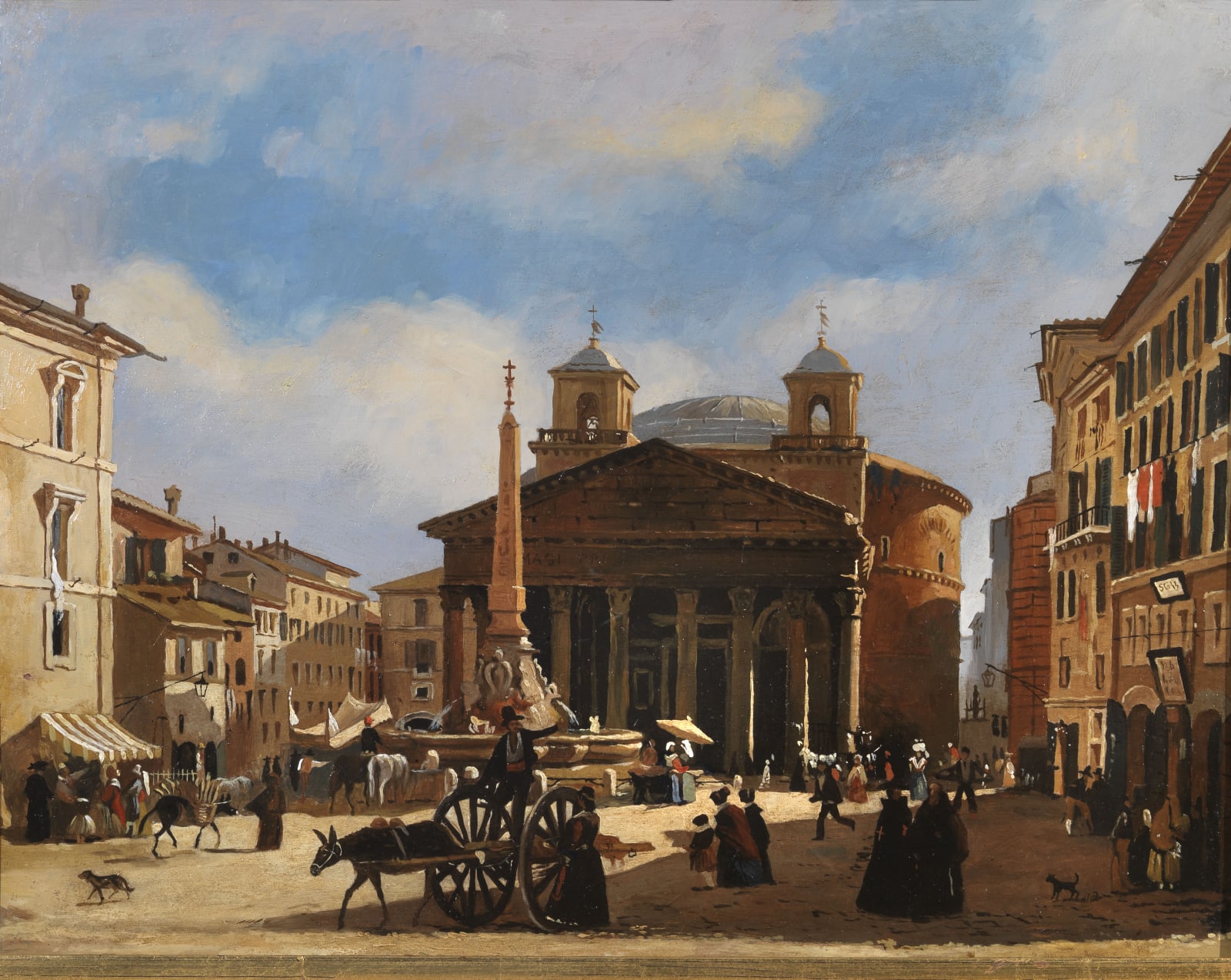Giacomo CANEVA
Literature
P. BECHETTI, Giacomo Caneva e la scuola fotografica romana (1847/1855), Alinari – Florence, 1989.
This picture, painted by Paduan artist and photographer Giacomo Caneva, shows a view of the Piazza della Rotonda, better known as the "Piazza del Pantheon", in Rome. Several small paintings signed with the characteristic figure of a dog ("cane" in Italian) followed by the letters va testify to Caneva's career as a painter.
Caneva began to work in the sphere of the figurative arts as a painter of perspectives, also showing an interest in architecture and aeronautics. He moved to Rome in 1838 to complete his training as painter and ended up spending the rest of his life in the city. We first hear of his time in Rome from Gaetano Moroni, who compiled the extensive Dizionario di erudizione ecclesiastica in which he tells us that Caneva, a painter of perspectives, was partly responsible for supervising the vast decorative scheme in Villa Torlonia in 1839–40, achieving superb results.
From the late 1840s the artist devoted his energies to studying professional photography, in particular the daguerreotype and the talbotype. The earliest clue to his activity as a photographer is to be found in the register of addresses which artists either resident in or passing through Rome would leave at the Caffè Greco. In this register, which had been kept since 1845, the first entry under the letter "C" reads: "G. Caneva, Painter-Photographer, Via Sistina no 100, 3rd floor", subsequently altered to reflect a change of address to "Via del Corso, by S. Carlo no 446, 4th floor".
Thus while continuing to paint, like so many artists of his day he had also embraced the photographer's profession. A talbotype of the "Piazza della Bocca della Verità" signed by Caneva and dated 1847 is considered to be the earliest talbotype ever produced by a photographer resident in the city. In the 1850s Caneva joined the Circolo Fotografico Romano, an association founded by painter and photographer Frédéric Flachéron with the aim of disseminating new photographic techniques and of capturing the city's most celebrated sights.
Caneva's photographic output, however, also includes views of the countryside around Rome and of figures in traditional costume together with reproductions of works of art. In 1855 Caneva wrote a manual on photographic technique entitled ‘Della fotografia. Trattato di Giacomo Caneva pittore prospettico’, showing the immense importance assigned to mastery of technique in the pioneering days of photography.
JOIN OUR MAILING LIST
Subscribe to our mailing list in order to receive news on new acquisitions, exhibitions, special previews and more!
* denotes required fields
We will process the personal data you have supplied to communicate with you in accordance with our Privacy Policy. You can unsubscribe or change your preferences at any time by clicking the link in our emails.
